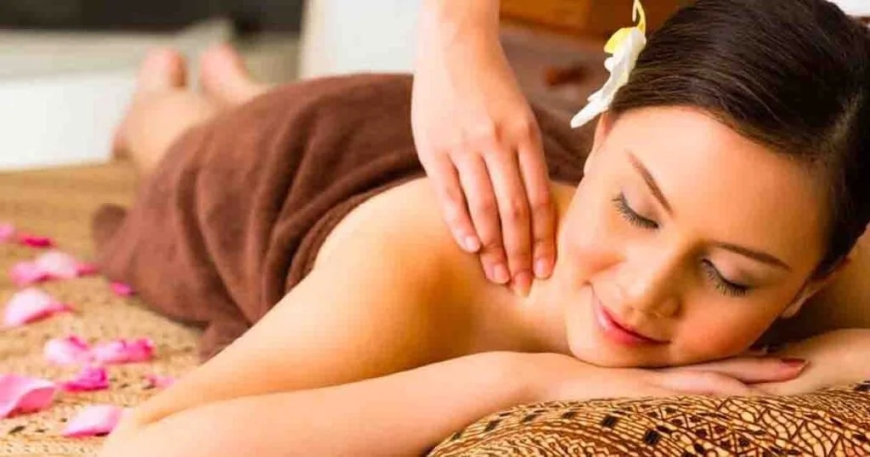Introduction
Massage has been a cornerstone of healing practices for thousands of years, offering physical and mental rejuvenation. Whether you’re seeking relief from stress, chronic pain, or muscle tension, massage therapy provides a holistic approach to health and wellness. In today’s fast-paced world, taking time for a massage is not just a luxury—it’s an essential part of self-care.
History of Massage
The origins of massage date back over 5,000 years, with evidence of its use in ancient civilizations like China, Egypt, and India.
- China: Early references to massage appear in Chinese medical texts, emphasizing its role in balancing energy or "Qi."
- Egypt: Ancient Egyptians depicted massage techniques in tomb paintings and used it as a form of physical therapy.
- India: Ayurveda, India’s traditional system of medicine, incorporated massage as a way to detoxify and rejuvenate the body.
- Modern Era: Today, massage therapy combines traditional techniques with scientific advancements, making it accessible worldwide.
Benefits of Massage Therapy
Massage offers a wide range of benefits for both the body and mind:
Physical Benefits
- Relieves Muscle Tension: Eases tight muscles and reduces soreness.
- Improves Circulation: Enhances blood flow, delivering oxygen and nutrients to tissues.
- Boosts Immunity: Stimulates the lymphatic system to remove toxins.
- Reduces Pain: Alleviates discomfort from conditions like arthritis, fibromyalgia, and sports injuries.
Mental and Emotional Benefits
- Reduces Stress: Lowers cortisol levels, promoting relaxation.
- Enhances Sleep Quality: Promotes deep, restorative sleep.
- Improves Mood: Increases serotonin and dopamine, reducing anxiety and depression.
- Promotes Mind-Body Connection: Encourages mindfulness and body awareness.
Types of Massage Techniques
There are numerous massage techniques, each catering to specific needs:
Swedish Massage
- Gentle and relaxing, focusing on long, flowing strokes to improve circulation and reduce tension.
- Ideal for beginners or those looking to relax.
Deep Tissue Massage
- Targets deeper layers of muscles and connective tissue.
- Best for chronic pain and muscle knots.
Sports Massage
- Designed for athletes, this technique enhances performance, prevents injuries, and aids recovery.
Hot Stone Massage
- Uses heated stones placed on specific points to release tension and promote relaxation.
Shiatsu
- A Japanese technique involving finger pressure on energy meridians to balance the body’s energy flow.
Aromatherapy Massage
- Incorporates essential oils to enhance relaxation, mood, and overall well-being.
Reflexology
- Focuses on applying pressure to specific points on the feet, hands, and ears, believed to correspond to various body systems.
How to Choose the Right Massage for You
Choosing the right massage depends on your goals and physical condition.
- For Stress Relief: Opt for Swedish or aromatherapy massage.
- For Chronic Pain: Deep tissue or sports massage may be ideal.
- For Energy Balance: Try Shiatsu or reflexology.
- For Specific Conditions: Consult a certified therapist who specializes in your needs.
Preparing for a Massage Session
To make the most of your massage therapy session:
- Communicate with Your Therapist: Discuss your goals, preferences, and any medical conditions.
- Stay Hydrated: Drink water before and after your session to flush toxins.
- Wear Comfortable Clothing: Opt for attire that’s easy to remove and put on.
- Relax Your Mind: Arrive early to settle into a calm state of mind.
Common Myths About Massage Therapy
1. Massage Is Only for Relaxation
While relaxation is a key benefit, massage also addresses medical conditions like chronic pain, injuries, and postural imbalances.
2. It’s Painful to Be Effective
Massage doesn’t need to hurt to work. Therapists tailor pressure to your comfort level.
3. It’s a Luxury, Not a Necessity
Massage is an essential part of self-care and preventive health, not just a luxury.
4. Only for Certain Age Groups
Massage benefits people of all ages, from infants to seniors.
FAQs About Massage
1. How often should I get a massage?
Frequency depends on your goals. For stress relief, once a month may suffice, while chronic pain may require weekly sessions.
2. Can pregnant women get massages?
Yes, prenatal massage is safe when performed by a certified therapist.
3. What should I wear during a massage?
You can undress to your comfort level. Therapists use draping techniques to ensure privacy.
4. Is it normal to feel sore after a massage?
Mild soreness can occur after deep tissue massages, but it usually subsides within a day.
5. Can massage help with anxiety?
Yes, massage reduces cortisol levels and promotes relaxation, helping to alleviate anxiety.
Conclusion
Massage therapy is more than a luxury; it’s a proven method for enhancing physical, mental, and emotional well-being. With various techniques tailored to individual needs, massage offers something for everyone. Whether you’re seeking relaxation, pain relief, or improved overall health, massage therapy is a powerful tool to achieve your goals.
Take the first step toward a healthier, more balanced life—schedule your massage today and experience the transformative benefits firsthand!







